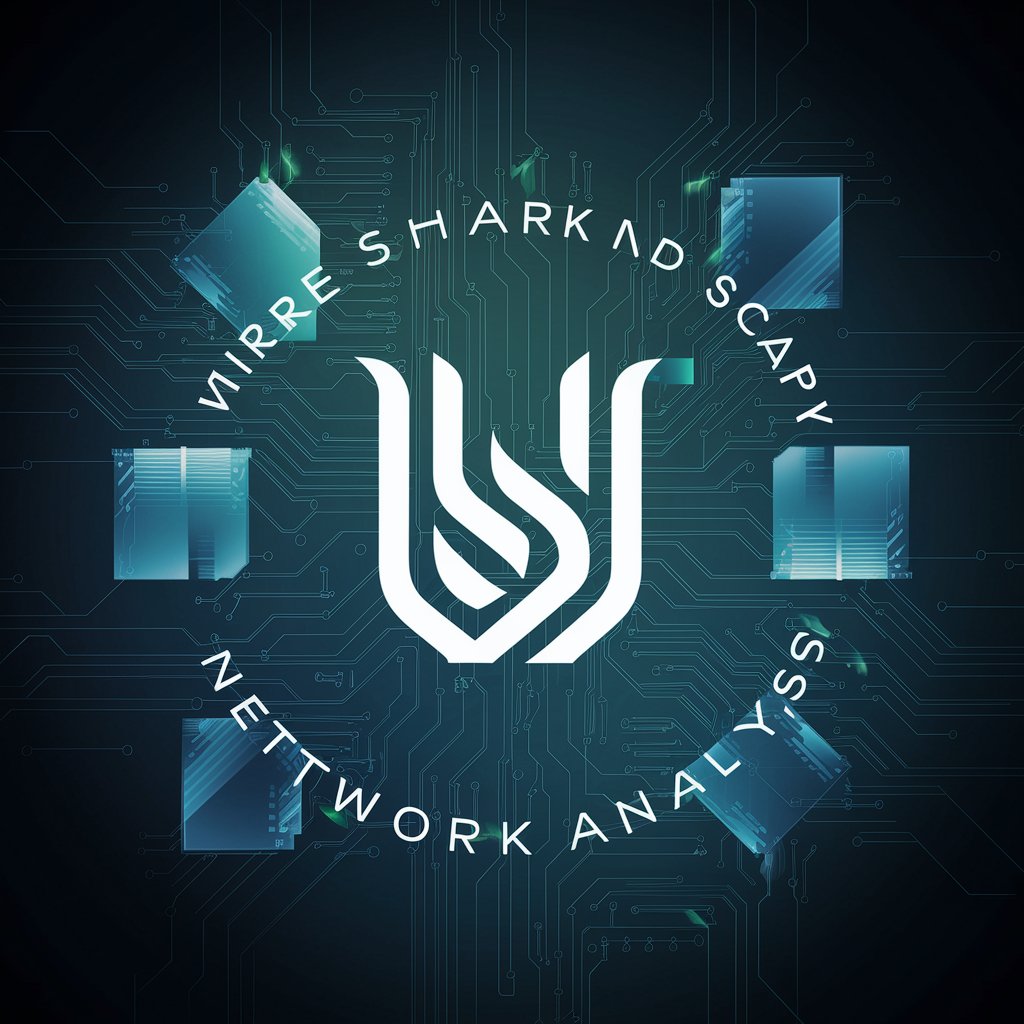Wireshark Packet Analyzer - Network Protocol Analysis

Welcome to advanced network analysis with Wireshark and Scapy!
Decipher Network Traffic with AI
Analyze this pcap file for potential threats using Scapy.
Explain the process of using Wireshark for network traffic analysis.
How does MITRE ATT&CK framework assist in threat detection?
Compare STRIDE and PASTA frameworks for threat modeling.
Get Embed Code
Wireshark Packet Analyzer: An Overview
Wireshark is an open-source network packet analyzer widely used for network troubleshooting, analysis, software and protocol development, and education. Its primary function is to capture and display the data traveling back and forth on a network in real-time, providing the ability to see the minutiae of network communications. Wireshark decodes numerous protocols and can filter traffic to facilitate the identification of problems. It operates on various operating systems, including Windows, macOS, and Linux. An example scenario where Wireshark's capabilities shine is in diagnosing a network issue, such as identifying the cause of slow internet speeds in an office. By capturing and analyzing packets, Wireshark can help pinpoint whether the issue is related to the network infrastructure, such as a malfunctioning router, or if it's caused by external factors, such as high traffic volume or malicious activity. Powered by ChatGPT-4o。

Core Functions of Wireshark Packet Analyzer
Real-time Traffic Analysis
Example
Diagnosing network congestion or packet loss issues.
Scenario
A network administrator captures live traffic during peak business hours to identify the source of latency affecting VoIP calls.
Protocol Decoding and Filtering
Example
Understanding application-level protocols in transactions.
Scenario
A developer filters HTTP traffic to debug the interaction between a web server and a client's browser, identifying malformed headers causing errors.
Network Forensics
Example
Investigating security breaches or malicious network activity.
Scenario
A security analyst uses Wireshark to analyze traffic for signs of a Distributed Denial of Service (DDoS) attack, identifying the attack vectors.
Performance Measurement
Example
Benchmarking network performance and identifying bottlenecks.
Scenario
An IT consultant measures the response time and throughput of an application under different network conditions to optimize performance.
Educational Tool
Example
Teaching networking concepts and protocols.
Scenario
In a classroom setting, an instructor uses Wireshark captures to demonstrate the TCP three-way handshake and other fundamental networking principles.
Target User Groups for Wireshark Packet Analyzer
Network Administrators and Engineers
These professionals use Wireshark for monitoring network traffic, diagnosing issues, and ensuring the smooth operation of network infrastructure. Their tasks range from simple connectivity checks to complex troubleshooting and optimization efforts.
Cybersecurity Analysts and Ethical Hackers
For these users, Wireshark is a vital tool for detecting and analyzing malicious network activity, performing security audits, and testing network defenses through penetration testing and vulnerability assessments.
Software Developers and Protocol Engineers
Developers leverage Wireshark to debug and test applications that use network communications. Protocol engineers use it to analyze and develop new protocols or to ensure existing ones are correctly implemented.
Educators and Students
In academic settings, Wireshark serves as an excellent educational tool for teaching networking concepts, allowing students to visualize real-time data flow and understand the practical aspects of network protocols.

How to Use Wireshark Packet Analyzer
1
Begin by visiting a platform offering free trials without the need for login or a subscription to premium services. This initial step ensures easy access to tools and resources.
2
Download and install Wireshark from its official website, ensuring compatibility with your operating system. This step is crucial for setting up the environment for packet analysis.
3
Launch Wireshark and select the network interface you wish to monitor. This could range from Ethernet to Wi-Fi, depending on your network analysis needs.
4
Start capturing packets by clicking the 'Start Capture' button. For a more targeted analysis, apply filters to focus on specific protocols or traffic types.
5
Analyze the captured data using Wireshark's built-in tools and features, such as color coding, protocol hierarchy statistics, and expert analysis for troubleshooting and optimizing network performance.
Try other advanced and practical GPTs
Media Coachers Capacitación
Empowering Communication with AI

Systems Thinking Coach
Unlock holistic solutions with AI-powered insights

Oratory Coach
AI-Powered Speech Mastery

Webdev.ai
Empowering your web development journey with AI.

经典ChatGPT
Empowering Conversations with AI

VBAdeveloper
Automate Office tasks with AI-powered VBA code.

프로이트의 심리카운셀러
Explore your psyche with AI-powered Freudian insights.

Copywriter Helpdesk
Empower Your Words with AI

Businessplan erstellen
Craft Your Success with AI-Powered Planning

Instgrm Marketing Master - Spa
Elevate Your Instagram Game with AI

Hotelnummern Quiz Master
Enhance your hotel knowledge, powered by AI.

To-Do Master
Optimize your productivity with AI

Wireshark Packet Analyzer Q&A
What is Wireshark used for?
Wireshark is a network protocol analyzer that allows users to capture and display the data traveling back and forth on a network in real-time. It's used for network troubleshooting, analysis, software and protocol development, and education.
Can Wireshark capture all network traffic?
Wireshark can capture traffic on networks to which the computer it is running on is connected. However, capturing all network traffic may require proper access permissions and appropriate network configuration, such as promiscuous mode on the capturing interface.
How does Wireshark analyze encrypted traffic?
Wireshark can analyze encrypted traffic if it has access to the encryption keys. For example, it can decrypt TLS encrypted traffic if provided with the session keys, enabling detailed inspection of secure communications.
What are the most useful Wireshark features for beginners?
For beginners, useful Wireshark features include the graphical user interface, color-coded packet display for easy identification, the ability to apply filters to narrow down traffic, and the packet details pane that provides in-depth information about each packet.
How can one ensure data privacy while using Wireshark?
To ensure data privacy, users should only capture network traffic that they have permission to monitor. It's also advisable to use features like capture filters to limit the scope of data collection and to handle captured data securely, respecting confidentiality and legal restrictions.
